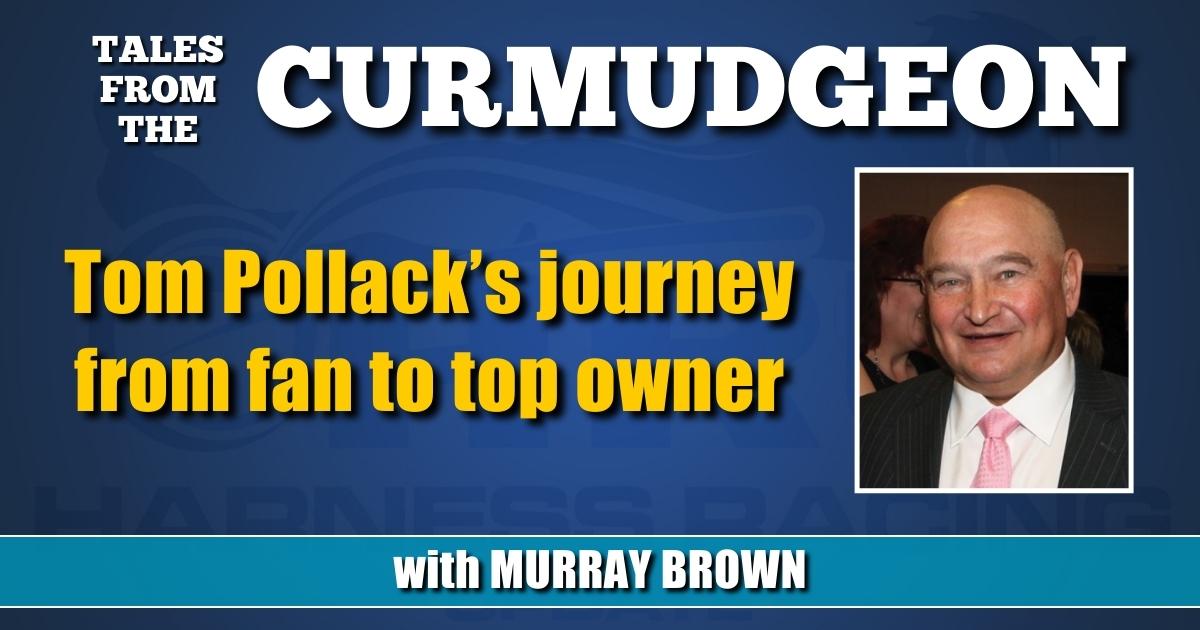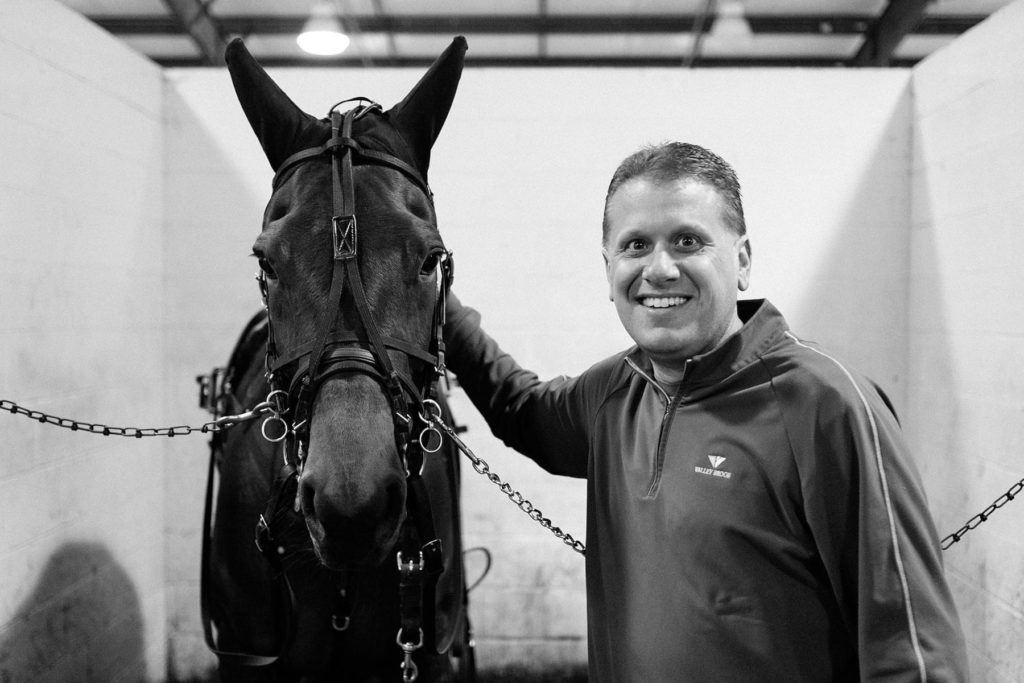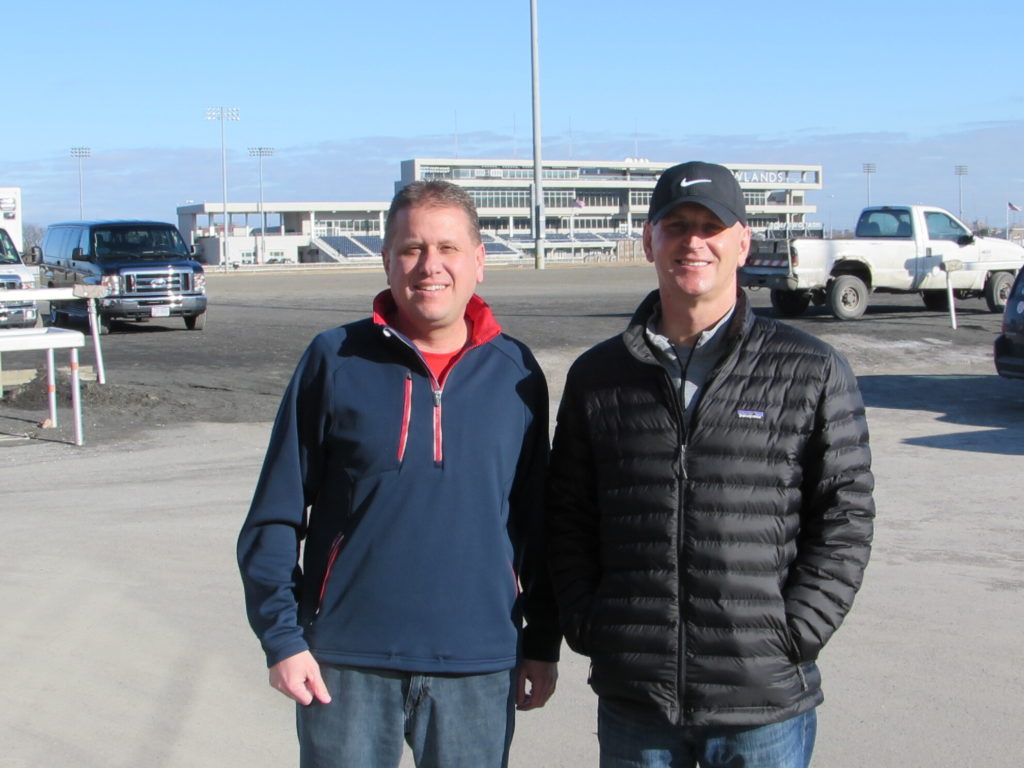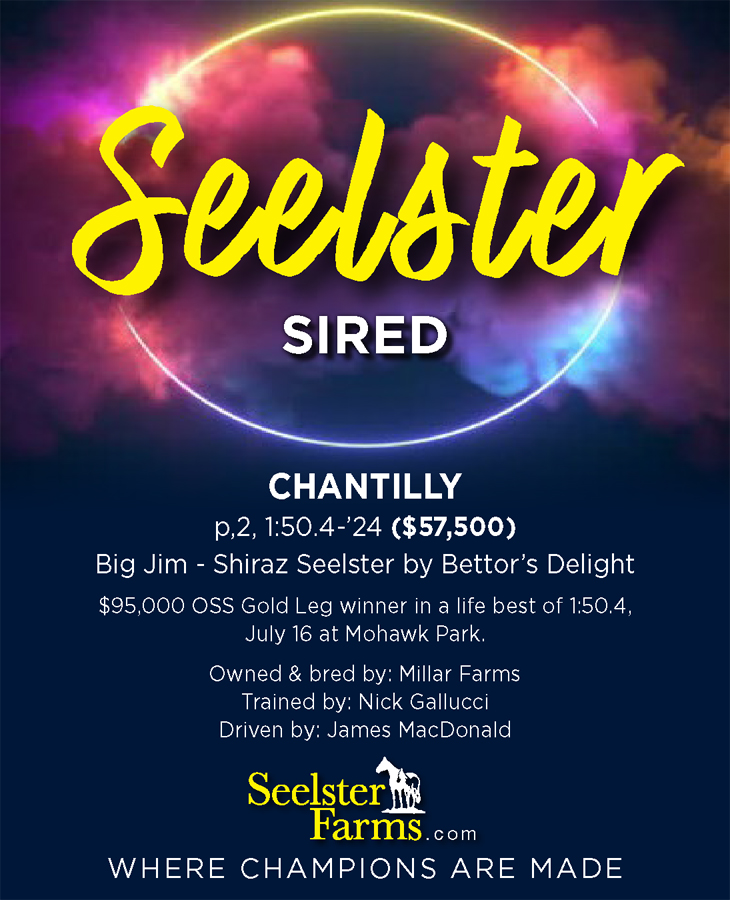

Tom Pollack’s journey from fan to top owner
by Murray Brown
If asked to name the most well-known owners of racehorses in the sport — those who likely have made the greatest investment in it — the list would undoubtedly be headed by the Burke/Weaver Bruscemi tandem followed by Howard Taylor and then maybe Brad Grant. I’m probably missing someone or several. Right up there with those luminaries would undoubtedly be the Pittsburgh-area owner Tom Pollack along with his trainers Jeff Cullipher and Randy Bendis.
Pollack’s present roster of horses in training numbers 118. When one regularly checks horses racing at The Meadowlands, Harrah’s (both in Indiana and Pennsylvania), Pocono Downs, Northfield and Oak Grove — basically wherever harness races take place and where his horses fit into the racing schedule — you will find Pollack’s horses racing. Some may think that Pollack is a fairly new arrival on the scene. He certainly has not been involved for as long as those previously mentioned. However, he has been involved, first as a fan in the late 1980s, and then as an owner beginning in 2009. Hehas been buying more and more horses since then.
You obviously love the sport. How did it all begin?
“I first went to the track as a teenager. I wasn›t particularly interested at the time. I›ve always enjoyed sports, pretty much all sports. Harness racing was nowhere near the top. Initially I didn’t see what might have been so appealing about watching a group of horses going round and round. A friend of mine John Campbell [not that John Campbell] had horses racing at The Meadows with Randy Bendis. He and his wife Janet loved the sport. They still do and are still quite involved. John convinced me that it might be fun to own a horse together with his trainer. We bought a trotter, Raps Legacy, and did quite well with him initially. We bought several horses after him and hit a drought. It didn’t matter much that we were not doing well. I was hooked.”
You are probably most associated with trainer Jeff Cullipher, but you are also still with Randy Bendis after all these years. To stay with the first trainer you had for almost 15 years is somewhat of a rarity in the sport.
“Yes. I still own 25 horses with Randy and now I am approaching somewhere near a hundred with Jeff. Randy races mostly at The Meadows, sometimes wandering to Ohio or elsewhere in Pennsylvania. Being with Randy allows me to have a hometown presence, which I really enjoy. I live near Mark Weaver and have become good friends with him. I doubt that I will ever have the number of horses that he has, but as the man selling lottery tickets says, ‘You never know.’”
How did your association with Cullipher come about?
“We had a 3-year-old trotting filly, BJs Elegant Image, eligible to the Indiana Sires Stakes. We sent her to Jeff and she won and won and won. When I initially met him, we hit it off. We are both about the same age and have a similar love for racing. As fate would have it, Jeff didn’t have many in his stable at the time. He was seriously thinking of leaving the business. I told him how passionate I was about the business, I loved it and really wanted to grow. Fortunately, he had the same passion and ambition and we’ve been together ever since.”
You’ve owned a lot of horses. Do you have any idea how many? Do you have any favorites?
“I’m guessing that we’ve owned somewhere in the area of 700. My favorite is probably Wisdom Tree. She swept the New York Sire Stakes, earned $687,376 and took a record of 1.49.1. She is now a broodmare for us. Her first foal is a filly by JK Endofanera that arrived a few days ago. Another one that was special and did very well for us was Medusa. She finished second in the Matchmaker and earned over a million dollars.”
It seems you race pretty much all over. Do you have a favorite track?
“I guess that would be The Meadowlands. It is generally referred to as the Mecca of the sport and it is. Together with Mohawk, the Red Mile and Harrah’s Hoosier, it is where a significant number of our best and most important races take place.”
How about drivers? From the outside looking in it seems that you generally use the best that might be available wherever you are racing.
“To a great degree that is true, but if I were asked to pick just one it would be Tim Tetrick. We get along very well. He is one of the greatest drivers our sport has ever known. Other than Timmy, we usually go with the one who we consider the best available at the time. In today’s racing there are very few poor drivers. They are all, to varying degrees, very good. It more often than not comes down to the horse they are sitting behind.”
Do you go to the races to watch your horses?
“Probably not near as much as I should. We fans have been spoiled by the easy access to racing at multiple tracks while enjoying the comforts of home. It is especially so in my case where I am almost always racing at more than one track. Basically, all I need do is switch the channel to go to the next horse, the next track and the next race.”
Which brings up the question, how do you keep up with them? You might have 10 or up to 30 horses racing at three or four venues on a given night. How do you get to see them all?
“Mark Weaver has developed an app that enables him to keep up with his over 300 horses in the Burke stable. He has generously shared it with me. I rarely am unable to see one of mine race.”
How much of a hands-on administrator are you when it comes to managing your horses?
“When it comes to discussions with the trainers, probably significantly, but not overbearingly so. With drivers, hardly at all. We have recently hired Marc Reynolds as a member of our team. He coordinates a great deal finding races for the horses and dealing with the horsemen who take care of them. One of Marc’s chief duties, if not the chief one, is keeping on the lookout for available horses to acquire. At one time, our main source was on site auctions. In recent years, these are going the way of the dodo bird. Other than the big one at Harrisburg and a few shrinking ones in Ohio, they have become almost obsolete. Marc constantly watches races and scours the internet looking for horses that might fit our needs. He also has his nose to the ground at the various racetracks and training centers. There aren’t a whole lot of people in the business that Marc doesn’t know. He more often than not will have entree to horses that might be available. He understands that we place a premium on quality and knows exactly the type of horse we are looking to acquire.
“Another of our perhaps hidden assets are my in-laws. They love the sport and follow our horses as avidly — sometimes more — than I do. If I don’t know something about any of our horses, they often do.”
What is it that you enjoy the most about the business?
“Primarily the excitement and the competition. I have always been a very competitive person. I just love competition. It encourages me to know more and to become better at just about everything that I do.”
Are there things that you dislike or think that can be improved in the business?
“A few, but not that many.
“1. Licensing. As most know, it can be a monumental pain in the rear end. It is improving though.
“2. Our purse structure at many, if not most racetracks. I feel that generally speaking a claimer will go for more money, sometimes significantly more money than an overnight or high-class horse of comparable ability or more, especially a young one. I feel that it places a premium on mediocrity at the expense of horses of more quality.
“3. The fact that some tracks will still race each other at the same time. I understand that significant work is being done to help coordinate these race times. I see improvement, but we are not quite where I would like to see us. Doing so helps everybody.
“4. So much day racing. I still need to have a day job in order to feed the needs of my racing stable. Racing in the daytime does not allow me and probably more owners to enjoy my horses as much as I would like to.
“5. The crazy and almost unbelievably low rate that the racetracks get for their signal. The tracks and the horsemen bear all the work and the expenses involved in putting on the races. All they get is a measly three per cent for their huge investment. That percentage should be double or more than what it is.”
What do you see the future in harness racing for yourself being?
“I would love to get bigger and better. The latter more than the former. I see myself as being a very passionate person. There are very few things in life that ignite my passion more than racing does.”

















